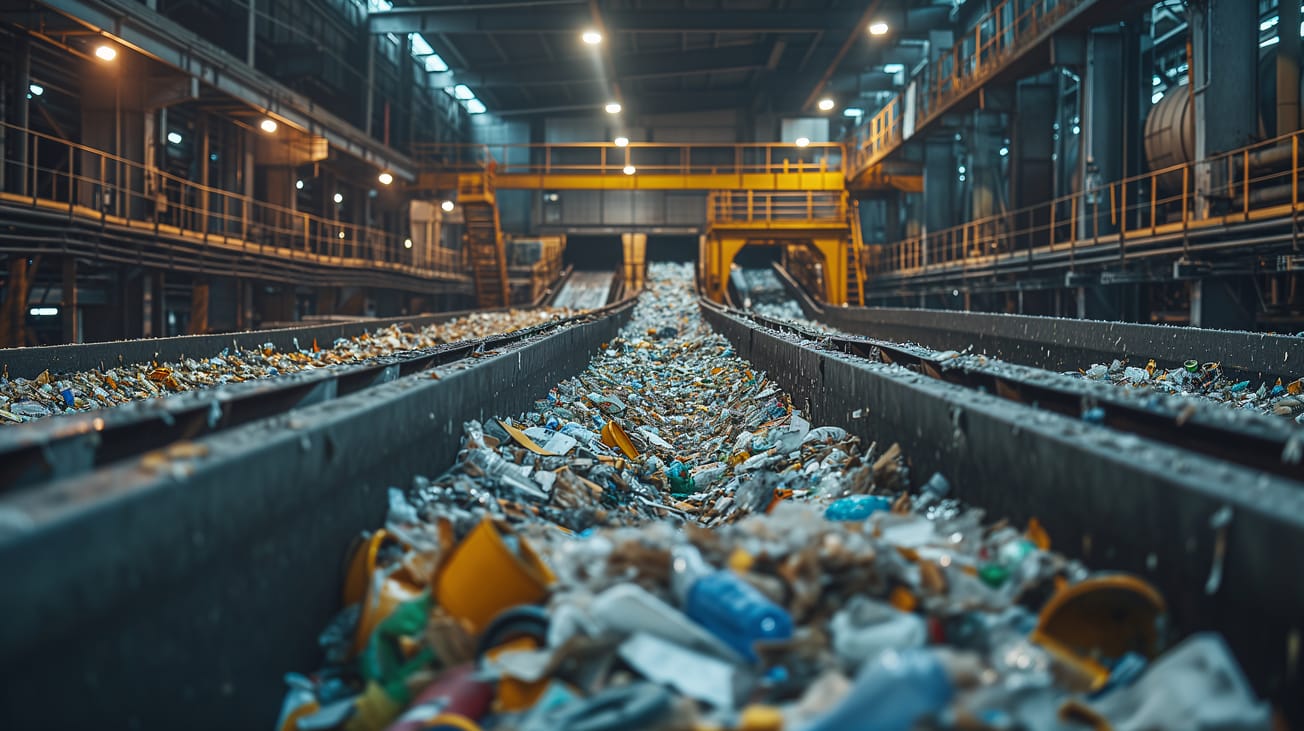Author: Helena Dickinson
As negotiators prepare for the final negotiating session to develop a legally binding instrument on plastic pollution (INC-5), Extended Producer Responsibility (EPR) has emerged as a crucial policy mechanism for consideration. While the current bracketed compilation text[1] includes various approaches to producer responsibility, we must ensure that any final agreement establishes clear requirements for producers to take financial and operational responsibility for their products throughout their lifecycle.
Producer Responsibility (PR) and Extended Producer Responsibility (EPR) represent approaches to managing product waste. Traditional PR focuses primarily on waste management, with obligations like take-back requirements or recycling fees. For example, simple bottle deposit schemes represent a PR approach, where producers are only responsible for the direct costs of container recovery.
EPR extends these obligations across the entire product lifecycle, incorporating both upstream design changes and downstream waste management responsibilities. The French CITEO system demonstrates comprehensive EPR, where producers pay eco-modulated fees covering full system costs while incentivising eco-design.
EPR can generate sustainable funding for waste management while incentivising better product design and supporting circular economy objectives. While traditionally associated with packaging, EPR can be effectively applied across all plastic-containing products, including electronics and electrical equipment (EEE), automotive parts, textiles, fishing gear, and agricultural plastics.
What could EPR in the Treaty look like?
EPR can be mandated by Governments, or voluntarily led by industry. In either scenario, it can be implemented through individual producer schemes, collective systems managed by Producer Responsibility Organisations (PROs), or hybrid approaches.
Under EPR schemes, producers may be required to carry out at least one of the below actions:
- Pay fees based on the quantity and recyclability of materials they put into the market
- Design products with end-of-life management in mind
- Contribute to collection, sorting, and recycling infrastructure
- Meet mandatory recycling targets and recycled content requirements
- Report transparently on volumes and waste management outcomes
These requirements create direct financial incentives for producers to reduce waste, improve recyclability, and invest in circular economy solutions.
The form that EPR could take depends on the level of ambition committed to – EPR activities under different levels of ambition are described below.
High-ambition elements of EPR
Comprehensive Financial Responsibility: Requires producers to cover 100% of waste management costs, including collection, sorting, recycling, and disposal. Includes modulated fees based on environmental criteria such as recyclability, recycled content, and design for circularity. Examples include:
- The UK's packaging EPR scheme requires full cost coverage for household packaging waste management.
- France's CITEO system requires producers to cover 80% of municipal waste management costs with modulated fees based on recyclability criteria.
- Germany's VerpackG implements fee modulation based on recyclability, recycled content, and carbon footprint.
- Norway charges up to 3x higher fees for non-recyclable packaging formats through their Extended Producer Responsibility scheme.
- Netherlands' Afvalfonds charges higher fees for difficult-to-recycle packaging colours.
Mandatory Collection and Recycling Targets: Sets legally binding, progressive targets for collection, recycling, and/or reuse rates with enforcement mechanisms and penalties for non-compliance.
- South Korea has achieved 70% recycling rate through mandatory EPR targets
- Japan's Container and Packaging Recycling Law sets material-specific targets
- EU has a 65% packaging recycling target by 2025
Mandatory Take-Back Schemes: Requires producers to establish or finance systems for collecting their products at end-of-life, ensuring effective reuse/recycling or disposal. This could include requirements for convenient collection points e.g., within their own stores, other’s stores e.g., supermarkets, or public spaces e.g., public car parks.
- Switzerland’s SENS/SWICO system mandates free electronics take-back at all retail points.
- Sweden's pharmacy take-back scheme requires collection of unused medicines
- India's E-waste Rules mandate producer take-back through authorised collection centres.
- EU's Battery Directive requires free take-back regardless of brand.
Moderately-ambition elements of EPR
Infrastructure Development Mechanisms: Mandates producer investment in collection, sorting, and recycling infrastructure. Could also include requirements for technology transfer and capacity building in developing nations.
- Vietnam's EPR decree requires producer investment in recycling facilities.
- Thailand's infrastructure development requirements under EPR.
- Kenya's EPR regulations mandating collection infrastructure investment.
Foundation elements of EPR
Basic Legal Frameworks: Establishes fundamental EPR obligations in national law, including producer registration, reporting requirements, and basic fee structures. Sets clear definitions and scope of materials covered.
- Egypt's Waste Management Regulation
- Nigeria's Extended Producer Responsibility Policy
Harmonised Reporting and Monitoring: Implements standardised methodologies for data collection, verification, and reporting for producers across jurisdictions. Requires third-party auditing and transparent public disclosure of performance metrics.
- EU's harmonised calculation methods for recycling rates
- Chile's REP system with standardised reporting requirements
- Singapore's mandatory packaging reporting
Why is EPR critical for inclusion in the Treaty?
Economic Impact
EPR redirects financial responsibility for waste management from public authorities to producers. By implementing EPR globally through the treaty, large sums of revenue could be generated annually for waste infrastructure, while municipalities could see their waste management costs reduce significantly.
Key economic benefits include:
- Creation of stable funding streams for collection and recycling systems
- Investment in waste management and recycling technology and infrastructure
- Establishment of market signals that reward design for repair/reuse/recycling.
- Generation of new jobs in collection, sorting, repairing and recycling sectors.
Environmental Outcomes
Countries with well-designed EPR systems typically see recycling and reuse rates increase, and plastic leakage fall. These improvements stem from both downstream waste management enhancements (funding for better infrastructure) and upstream design changes (incentives from fees resulting in shifts in product design).
Primary environmental benefits include:
- Fewer products destined for landfill/incineration due to eco-design incentives.
- Reduced contamination in recycling streams through better infrastructure.
- Less virgin plastic used due to recycled content requirements.
- Lower greenhouse gas emissions from less waste.
Global Equity
EPR can serve as a powerful mechanism for addressing waste management disparities between nations. Through the treaty, EPR can ensure multinational companies take equivalent responsibility across all markets where they operate, while providing sustained funding for waste infrastructure in developing countries. This creates a more level playing field while supporting technological advancement in emerging economies.
Critical equity outcomes include:
- Technology transfer and capacity building in emerging economies.
- Creation of formal employment opportunities for informal waste workers.
- Prevention of "waste havens" through common standards.
- Support for developing nations to advance waste management systems.
Recommendations
- Mandatory Reporting and Disclosure
The treaty should establish clear reporting requirements for governments and producers (with differentiated obligations based on company size and market presence):
- Knowledge Sharing and Capacity Building
Countries with established EPR systems should be required to support emerging schemes through technical assistance and research support.
- Financial Support Mechanisms
Establish dedicated funding streams to support EPR implementation. For example through the creation of a global EPR transition fund, technical assistance grants for developing nations and funding for informal sector integration.
- Harmonised Standards and Metrics
Develop globally consistent approaches for:
- Measurement and reporting methodologies
- Minimum requirements for EPR schemes
- Eco-modulation criteria for fees
- Recyclability definitions and assessment methods
Summary
EPR is crucial to the Global Plastics Pollution Treaty, offering significant economic, environmental, and equity benefits. While high-ambition EPR schemes can generate substantial funding for waste infrastructure and significantly reduce global waste, even less ambitious EPR elements can yield important outcomes. For example, infrastructure development mandates facilitate improved waste management and basic EPR frameworks provide key legal structures which set the groundwork for waste reduction. Even these foundational schemes lead to economic benefits (new jobs and market signals for more sustainable product designs) and environmental benefits (increased recycling rates and reduced landfilled waste). EPR therefore has the potential to make a key contribution to our progress in addressing global plastic pollution.
[1] The compilation text is a working document that combines all the different country proposals for the global plastics treaty into one organised document. It serves as a starting point for negotiations at INC-5 by showing all suggested options for different parts of the treaty, before countries agree on final treaty text.







